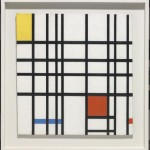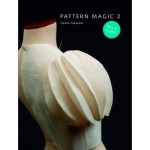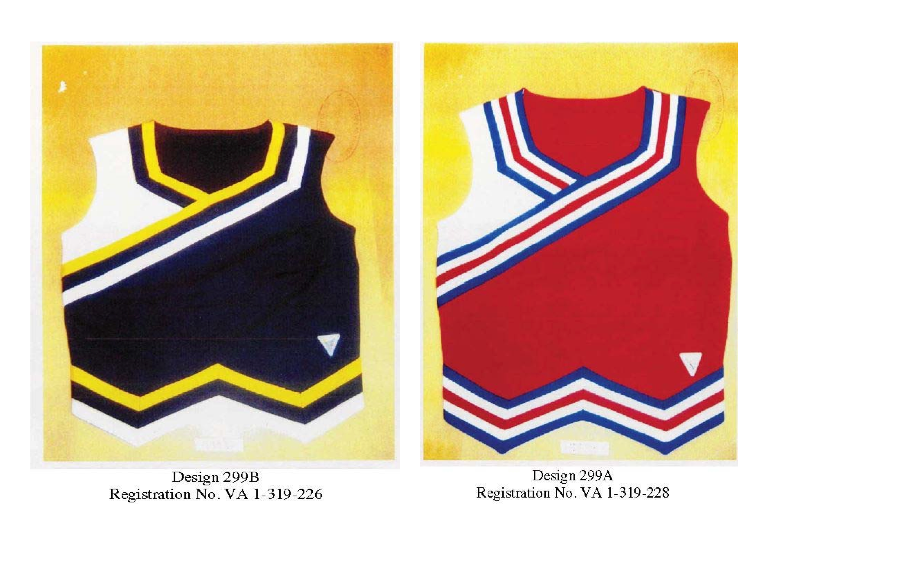(Written for master trademark attorney Ron Coleman’s Likelihood Of Confusion® blog, crossposted with his gracious consent.)
So last Wednesday (March 22, 2017, if you’re joining us late) the Supreme Court of the United States issued its decision in Star Athletica, LLC v. Varsity Brands, Inc, et al.
And a very small, highly specialized subset of LawTwitter went nuts.
Ron Coleman collected some great examples on his post Rah Rah Raw. (Trademark attorneys: Clever names on demand.) On the one hand, we have experienced copyright/fashion lawyers saying things like this:
Supreme Court issued very narrow ruling in #Varsity #copyright case today, solely resolving circuit split on separability test #FashionLaw
— Staci Riordan (@staciriordan) March 22, 2017
On the other hand, we have intellectual property law professors saying things like this:
Huh? The Court overturned decades of circuit court cases without comment and did away with a central & widely accepted feature of doctrine. https://t.co/Q9ypR3FSfz
— Chris Buccafusco (@cjbuccafusco) March 22, 2017
If it’s not clear, that was a response to the prior tweet. Or even things like this:
Everything is now copyrightable, even something patentable. Horrible day 4 copyright law w #SupremeCourt decision on cheerleading uniforms
— Jeanne Fromer (@JeanneFromer) March 22, 2017
…when they really ought to know better. 140 character limit or not, that seems a bit over the top. But is it? Let’s review the decision.
First, a very brief summary of patent law vs. copyright law. Patents protect useful inventions. Copyrights protect artistic creations. In a sense, patents “trump” copyrights, in that you cannot use a copyright to protect a useful invention. (For instance, you cannot copyright the shape of an improved airplane propeller and claim nobody else can make a similar propeller. That’s what patents are for.) Patents are harder to get than copyrights, have much shorter terms, and cost a lot more both to obtain and to enforce. On the other hand, you can usually make a lot more money in a patent infringement suit than in a copyright infringement suit, there are fewer defenses to patent infringement than copyright infringement, and defenses to patent infringement are harder to raise.
Just to make things conf… I mean, interesting there are also what are known as design patents. These protect the “ornamental design of useful articles.” They are sort of a bizarre hybrid of patents and copyrights that have some of the worst (and best) features of both. They are outside the scope of the decision, but keep in mind that they exist when discussing this area of the law, if for no other reason than that “design” does not mean quite the same thing to a (design) patent lawyer that it does to a copyright lawyer, and I think that causes some of the confusion we are seeing.
Speaking of designs, in this context, designs are the key. Both parties in the Varsity Brands case make cheerleader uniforms, including non-team-specific uniforms with a variety of geometric designs on them. Here are examples:
Those are uniforms for which Varsity Brands, Inc. (the original plaintiff, which is why I call the case Varsity Brands, hereafter “Varsity”) had registered copyrights. Star Athletica, LLC (hereafter, “Star”) made some competing uniforms which allegedly infringed said copyrights, and Varsity sued Star for copyright infringement.
Please allow me first and foremost to direct your attention to Footnote 1 on Page 11 of the main opinion:
1We do not today hold that the surface decorations are copyrightable. We express no opinion on whether these works are sufficiently original to qualify for copyright protection, see Feist Publications, Inc. v. Rural Telephone Service Co., 499 U. S. 340, 358–359 (1991), or on whether any other prerequisite of a valid copyright has been satisfied.
Failure to read/understand/accept the text of that footnote is, in my opinion, behind most of the more sensational tweets/comments such as Professor Fromer’s supra. The assertion that you can now slap a copyrighted design on any old thing and claim the thing itself enjoys the protection of copyright meets its first and highest hurdle in the fact that the design must in and of itself be copyrightable. The opinion is not addressing the question of copyrightability of the underlying design. (I myself, though not familiar with the particulars of the registrations, find them somewhat dubious in that regard.) It is assuming arguendo that the design is copyrighted, and resolving an old and complex circuit split on the legal ramifications of attaching a copyrighted design to a useful article.
And yes, there was a complex split. I have seen people claiming as many as six different tests existed for determining when useful article limitation overcame copyright protection. Many of them considered, to some degree, how functional the article was as an independent factor. And this is not a new idea. It is an old principle, recently re-affirmed in TrafFix Devices, Inc. v. Marketing_Displays, Inc. that you cannot use trade dress to create “perpetual patents.” Similarly, in Kohler Co. v. Moen, Incorporated the same rule was applied to trademarks. All of the tests attempting to do the same with copyright were created by intelligent judges and it is not my intent to dismiss or belittle them.
But I think that Occam’s Razor (the original, not the newfangled version) is very relevant here: “Do not multiply entities beyond necessity.” The intent of copyrights is to protect artistic works (henceforth I will not call them “designs.”) Using functionality as an independent test, in the case of artistic works applied to useful articles, is adding an unnecessary entity. And asking questions about intent versus perception or relative economic factors, as some of the tests did, is definitely adding unnecessary entities.
As a simple example, Justice Breyer’s dissent wants to apply a somewhat different approach:
Can we extract those features as copyrightable design works standing alone, without bringing along, via picture or design, the dresses of which they constitute a part? (Dissent, page 10.)
However, as the main opinion points out, not only does this lead to implausible results (You can’t copyright a square canvas: does this mean any painting made on one can’t be copyrighted?) but it imposes a requirement not found in the Copyright Act. As the first paragraph of the syllabus says:
The Copyright Act of 1976 makes “pictorial, graphic, or sculptural features” of the “design of a useful article” eligible for copyright protection as artistic works if those features “can be identified separately from, and are capable of existing independently of, the utilitarian aspects of the article.” 17 U. S. C. §101.
There are two “entities,” if you will:
- Can you identify the artistic work separately?
- Can it exist independently of the useful article?
In Varsity Brands, the answer to both questions is clearly yes. The artistic work is the pattern of lines and figures. We could, with a really sharp knife, take the top layer of fabric off and create an independent work without destroying or limiting the usefulness of the underlying article in any way. How artistic it would be is a separate question, but if this:

…is a prized exhibit of one of the world’s great art galleries, who are we to say that Varsity’s works are unworthy of a little protection?
In any event, Justice Breyer’s proposed test, just like all the other tests, includes new entities which are neither necessary nor present in the statute. The test set forth in the opinion puts the burden exactly where the statute set it all along, and just as importantly, where the underlying principle of copyright protection would reasonably set it: on the independent existence and originality of the artistic work. Once they are established the “canvas” upon which artistic work rests, be it an actual canvas, a t-shirt, or a cheerleading uniform, matters not.
So what does all this mean to practitioners on the ground?
Going forward, this test will put a lot more emphasis back on the fundamentals of copyrightability and the doctrines governing it. Copyrightability is a mixed question of fact and law, heavily fact-dependent. Principles of copyrightability determination such as scènes à faire, the merger doctrine, and even the basic requirement of minimal artistic creativity set forth in Feist are untouched by the decision. These principles will form the basis for defense of copyright infringement allegations involving useful articles, rather than elaborate and circuit-dependent tests regarding how the functionality affects the copyright protection afforded the copyright owner.
Likewise, when the useful article itself is ornamental, preemption by the principles of design patent law will still come into play. If the ornamental design and the useful object are irretrievably combined, only design patent protection will be available. And that distinction will still be available as a defense to any claim of copyright infringement in the article as a whole.
For an example of how that could apply to fashion, consider the work of Tomoko Nakamichi:

In the case of clothing such as that made by Ms. Nakamichi, the artistic work is usually not going to be any individual decoration, but rather the article of clothing as a whole. If you remove the “artistic” parts, there is almost nothing useful left. Part of that is the non-two-dimensional nature of the artistic work. You will note that the Varsity Brands opinion talks a lot about applying two and three-dimensional artworks to useful articles. But here the subcomponents are mechanically integrated into the article itself, and removing them would cause the article to be less useful. Distinctions like this will become more important with the alternative tests that existed before Varsity Brands no longer available.
Relatedly, copyright law has an extensive body of doctrine as to how much of a copyrighted artwork must be copied to create an infringement and how much modification an alleged infringer must perform before the alleged infringing work is no longer a copy or an infringing derivative work. Those principles still apply, full force, to any allegation of copyright infringement related to a useful article under Varsity Brands. Along with standard copyrightability defenses and patent/design patent preemption, these provide accused infringers substantial protection from the tsunami of liability some commenters are predicting in the wake of Varsity Brands.
I hope you found this post educational. Even more importantly, to the extent you may have been worried about a sudden surge in potential liability on behalf of creators I hope it has reassured you somewhat. If readers have any questions or comments, I would be delighted to hear them. Thanks for reading!


Dear legalinspiration.com webmaster, You always provide great examples and real-world applications.
Dear legalinspiration.com owner, Thanks for the educational content!
Dear legalinspiration.com owner, Thanks for the educational content!
Hi legalinspiration.com administrator, Your posts are always well organized and easy to understand.
To the legalinspiration.com owner, Great content!
Hello legalinspiration.com admin, Keep up the great work!
Hi legalinspiration.com administrator, Your posts are always on topic and relevant.
Hello legalinspiration.com owner, Your posts are always well-balanced and objective.
Dear legalinspiration.com webmaster, Your posts are always a great source of knowledge.
To the legalinspiration.com admin, Your posts are always well-supported by facts and figures.
Hi legalinspiration.com webmaster, Your posts are always well-delivered and engaging.
Hi legalinspiration.com admin, Good job!
Dear legalinspiration.com owner, Good to see your posts!
Hi legalinspiration.com webmaster, Good to see your posts!
Hi legalinspiration.com webmaster, Your posts are always informative and well-explained.
Hello legalinspiration.com owner, You always provide useful information.
Dear legalinspiration.com owner, You always provide clear explanations and step-by-step instructions.
Hi legalinspiration.com owner, Keep sharing your knowledge!
Hi legalinspiration.com admin, Your posts are always a great source of information.
Hi legalinspiration.com administrator, You always provide key takeaways and summaries.
Hello legalinspiration.com administrator, Your posts are always a great source of knowledge.
Hello legalinspiration.com administrator, Your posts are always well-supported by facts and figures.
Dear legalinspiration.com owner, Thanks for the informative and well-written post!
Dear legalinspiration.com administrator, Thanks for the well written post!
Hi legalinspiration.com administrator, Your posts are always well-received and appreciated.
I lile whhat you guys are usually up too. This type of clever work and exposure!
Keep upp tthe excellennt works guhys I’ve included yoou guyys
to my blogroll.
Hi legalinspiration.com administrator, You always provide great information and insights.
Dear legalinspiration.com webmaster, Your posts are always well-referenced and credible.
To the legalinspiration.com webmaster, Thanks for the well-researched and well-written post!
Dear legalinspiration.com admin, Your posts are always a great read.
Hi legalinspiration.com administrator, You always provide great examples and real-world applications.
To the legalinspiration.com owner, Thanks for sharing your thoughts!
Hi legalinspiration.com admin, Your posts are always well-formatted and easy to read.
Dear legalinspiration.com owner, Your posts are always well-structured and logical.